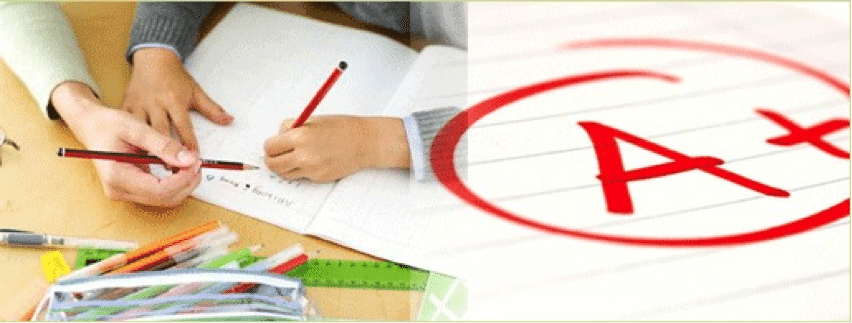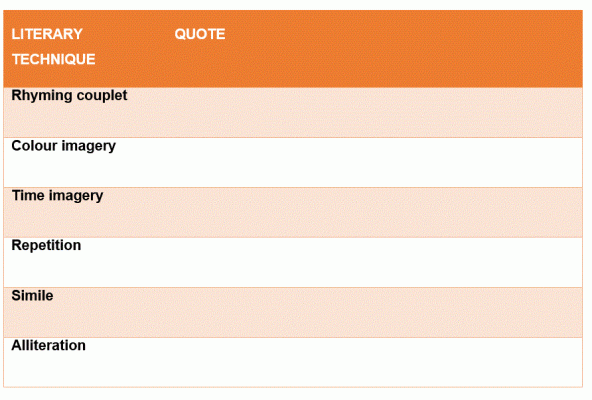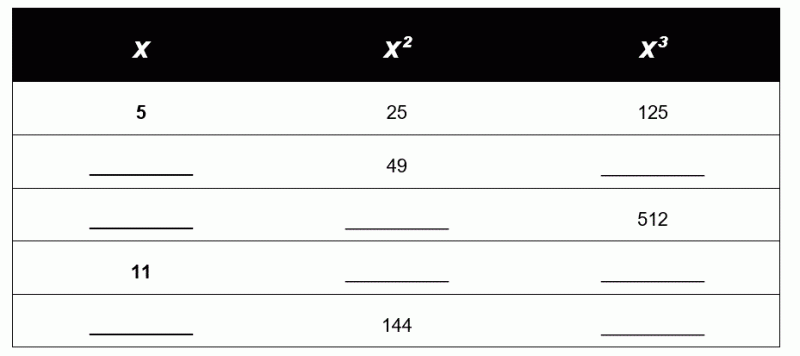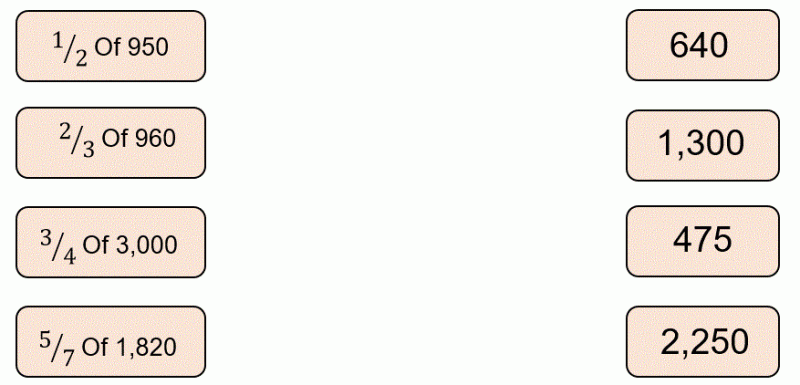KS3 Revision – A Parent’s Guide
If you are a parent with a child in Key Stage 3 (Years 7, 8 and 9) you will be tasked with the challenging job of maintaining your child is making the most out of their revision time.
In this blog, I am going to cover KS3 Revision in great detail to give you, as a parent or guardian, an insight into what your child is being taught in the classroom, and how you can help them during the revision process.
Key Stage 3 (Years 7, 8 and 9) are the first years of secondary school whereby subjects are taught to children to prepare them for their GCSEs. These lessons will be graded via term reports and mock assessments to determine whether your child is on the right track.
Although these schooling years do not count towards any final grade, they are extremely helpful when working out what subjects your child should choose to study at GCSE level.
Within this blog, I am going to cover the fundamentals of KS3 English and KS3 Maths – just to give you some insight into your child’s education. We all know how secretive young teenagers can be, so rather than asking them what they’re learning, we will just tell you!

KS3 Revision – English
(click here to expand!)
Below I have broken down the English school curriculum to show you what your child will be taught during their English subject.
table.tableizer-table {font-size: 12px;border: 1px solid #CCC;font-family: Arial, Helvetica, sans-serif;}.tableizer-table td {padding: 4px;margin: 3px;border: 1px solid #CCC;}.tableizer-table th {background-color: #104E8B;color: #FFF;font-weight: bold;}
| READING |
|---|
| Develop an appreciation of the English Language. |
| Engage with a variety of literary texts including: non-fiction, fiction, plays and poetry. Texts that cover a wide range of genres, eras, authors, styles and narratives. |
| Reading books for pleasure and academia. |
| Understanding the importance of Shakespeare’s works. |
| Learning new vocabulary, grammar and literary techniques. |
| Analysing key words and phrases. |
| Making inferences and assumptions based on the information provided. |
| Knowing the meaning behind the text, including the purpose, audience and context. |
| Recognising different literary techniques. |
| Analysing narration, characterisation, style, themes and genre. |
| Comparing two or more texts (cross-examination). |
| Understanding meaning through figurative language, word choices, structure and conventions. |
table.tableizer-table {font-size: 12px;border: 1px solid #CCC;font-family: Arial, Helvetica, sans-serif;}.tableizer-table td {padding: 4px;margin: 3px;border: 1px solid #CCC;}.tableizer-table th {background-color: #104E8B;color: #FFF;font-weight: bold;}
| WRITING |
|---|
| Write with fluency, ease and control. |
| Write a range of different literary texts including: strong, persuasive, narrative essays, short stories, plays and poetry, imaginative writing, formal letters, scripts and presentations. |
| Plan and draft your ideas. Think about: characters, narratives, themes, motives, styles, context, audience and purpose. |
| Carefully choosing grammar and understanding the importance of vocabulary. |
| Structuring your writing format in a clear and concise manner. |
| Understanding the importance of audience, and how your writing can be influential. |
| Be original and creative. |
| Use the English Language in a way that is expressive, creative, informative, imaginative or personal. |
table.tableizer-table {font-size: 12px;border: 1px solid #CCC;font-family: Arial, Helvetica, sans-serif;}.tableizer-table td {padding: 4px;margin: 3px;border: 1px solid #CCC;}.tableizer-table th {background-color: #104E8B;color: #FFF;font-weight: bold;}
| GRAMMAR AND VOCABULARY |
|---|
| Improve on pre-existing grammar and vocabulary skills taught in Key Stage 2. |
| Understand the importance of grammar: |
| How this creates meaning. |
| The impact this has on the audience. |
| Analyse key words and phrases: |
| What kind of literary text you are writing/reading. |
| What words mean and how they can be interpreted. |
| Is it a formal or informal piece of literary text? |
table.tableizer-table {font-size: 12px;border: 1px solid #CCC;font-family: Arial, Helvetica, sans-serif;}.tableizer-table td {padding: 4px;margin: 3px;border: 1px solid #CCC;}.tableizer-table th {background-color: #104E8B;color: #FFF;font-weight: bold;}
| SPOKEN ENGLISH |
|---|
| Verbally communicate to a high standard by speaking confidently, persuasively and effectively. |
| Improve their speaking skills by engaging with particular grammar and vocabulary. |
| Understanding what type of spoken English you should use and in what context. |
| Understanding how to get your point across in the best possible way. |
| Participate in verbal debates, discussions and presentations. |
| Improve on speaking skills such as volume, tone, enthusiasm and interaction. |
KS3 REVISION – ENGLISH PRACTICE QUESTIONS
(click here to expand!)
Write your answers in the comments box below and I will mark how well you have done!
My Very Own Wonderland
10am, the air still warming,
That time of year, leaves transforming,
Colours of yellows, vibrant and gold,
A memory to share, I have never told:
A secret garden, in all its glory,
A setting for a fairy tale story.
Oh so pretty, oh so quiet;
Wildlife free, and running riot.
My feet transfixed, here I stand;
My very own wonderland.
A Garden of Eden – total perfection;
A range of flowers – a stunning collection.
1 o’clock strikes, as I look up at the sky,
I thought to myself, “Oh how I would love to fly!”
Butterflies, robins and woodpeckers surround,
Never confined to the earthy ground.
Rabbits roaming, squirrels climbing,
Picturesque, surreal, musical rhyming.
I watch the nature do its thing,
As I sit and play, and swing and swing.
The reason this place is my safe haven,
Is the freedom I feel; like a flying raven.
So strong, so powerful, so wild and free,
Traits desirable, I wish them on me.
I walk, look down, at my own reflection,
I shy away from my imperfection.
The flow of movement, calming swirl,
Liquid gold like a ruby or pearl.
A place of my own, where everyone is banned,
Nobody to enter my wonderland.
Filled with hope, filled with dreams,
Whether they’re big, or whether extreme.
The fiery rays burning bright,
Counting the hours until moonlight.
Hours and hours have gone and passed,
My time is up, it’s gone so fast.
Now the moon shines down on me,
As I sit upright under the cherry tree.
Here I sit and contemplate,
My life, my world, my unknown fate.
8 o’clock is here, and the day is over,
I feel so lucky, like a four leaf clover.
There is no place I would rather be,
A place to go, just for me.
My special place, insignificant yet grand;
To me it’s the definition of a wonderland.
A place to think, a place to roam,
A place to me I’ll always call home.
QUESTION 1
The poet of ‘My Very Own Wonderland’ uses a very specific rhythmic structure.
Out of the following, which rhyming pattern replicates the rhyming pattern in the poem?
ABCA
ABBA
ABAB
AABB
QUESTION 2
Why do you think the poem uses a rhyming pattern for this poem? What effect does this have on the reader?
QUESTION 3
For each literary technique, you need to find an example in the poem.



KS3 REVISION – MATHS
(click here to expand!)
Maths is not only used in maths classes, but can also be applied to other school subjects such as Science and Geography. Moreover, Maths also equips students to be prepared for simple calculations outside of the classroom, which can be used in day-to-day scenarios.
Below I have broken down the Maths school curriculum to show you what your child will be taught during their Maths subject.
table.tableizer-table {font-size: 12px;border: 1px solid #CCC;font-family: Arial, Helvetica, sans-serif;}.tableizer-table td {padding: 4px;margin: 3px;border: 1px solid #CCC;}.tableizer-table th {background-color: #104E8B;color: #FFF;font-weight: bold;}
| NUMBERS AND CALCULATIONS |
|---|
| Apply the concepts of the following mathematical numbers: prime numbers, factors, multiples, common factors, common multiples, highest common factor (HCF), lowest common multiple (LCM) and prime factorisation. |
| Use place values for working out decimals, measures and integers of any size. |
| Order numbers in terms of positive and negative. Students should also have a strong grasp of mathematical symbols including: =, ≠, , ≤, ≥ |
| Use brackets, powers, roots and reciprocals. |
| Use different standard units of measure including: mass, length, time and money. |
| Round numbers up and down to the correct degree of accuracy. Students will be taught about significant figures and decimal places. |
| Correctly use a calculator, and learn all of the key buttons on a scientific calculator. |
| Interpret percentages as being ‘a number out of 100’. Pupils will also be taught how to use percentages higher than 100%, how to convert a percentage into a fraction or decimal, and how to find the percentage of a number. |
| Recognise square and cube numbers, and understanding the importance of powers 2, 3, 4 and 5. |
| Appreciate the infinite nature of the sets of integers, real an rational numbers. |
| Interpret and compare numbers in standard form A x 10ᶰ 1≤A<10, where N is a positive or negative integer or zero. |
table.tableizer-table {font-size: 12px;border: 1px solid #CCC;font-family: Arial, Helvetica, sans-serif;}.tableizer-table td {padding: 4px;margin: 3px;border: 1px solid #CCC;}.tableizer-table th {background-color: #104E8B;color: #FFF;font-weight: bold;}
| PROBABILITY AND STATISTICS |
|---|
| Understand the probability of an outcome. |
| Record, describe and analyse the frequency of outcomes of simple probability experiments involving randomness, fairness, equally and unequally likely outcomes, using mathematical language, and the use of a probability scale from 0-1. |
| Enumerate data and understand information provided in the form of: tables, grids, graphs and charts, Venn diagrams and pictograms. |
| Describe, interpret and compare information from graphical representations. |
| Understand the mean, mode, median and range of a set of data, and comparing this to other similar data. |
| Construct graphs and charts in order to represent a set of data. Pupils should understand what type of graph or chart works best for the data they have collated. |
table.tableizer-table {font-size: 12px;border: 1px solid #CCC;font-family: Arial, Helvetica, sans-serif;}.tableizer-table td {padding: 4px;margin: 3px;border: 1px solid #CCC;}.tableizer-table th {background-color: #104E8B;color: #FFF;font-weight: bold;}
| RATIO, PROPORTION AND RATES OF CHANGE |
|---|
| Change between different standard units. For example: length, area, time, volume and mass. |
| Use ratio notation, including reduction to simplest form. |
| Use scale factors, scale diagrams and maps. |
| Express one quantity as a fraction of another, where the fraction is less than 1 and greater than 1. |
| Divide a given quantity into two parts in a given part:part or part:whole ratio; express the division of a quantity into two parts as a ratio. |
| Understand that a multiplicative relationship between two quantities can be expressed as a ratio or a fraction. |
| Relate the language of ratios and the associated calculations to the arithmetic of fractions and to linear functions. |
| Solve problems involving percentage change, including: percentage increase, percentage decrease, original value problems and simple interest in financial mathematics. |
| Solve problems involving direct and inverse proportion, including graphical and algebraic representations. |
| Use compound units such as speed, unit pricing and density to solve problems. |
table.tableizer-table {font-size: 12px;border: 1px solid #CCC;font-family: Arial, Helvetica, sans-serif;}.tableizer-table td {padding: 4px;margin: 3px;border: 1px solid #CCC;}.tableizer-table th {background-color: #104E8B;color: #FFF;font-weight: bold;}
| WORKING WITH ALGEBRA |
|---|
| Use and interpret algebraic notations. |
| Substitute numerical values into formulae and expressions, including scientific formulae. |
| Understand and use the concepts and vocabulary of expressions, equations, inequalities, terms and factors |
| Simplify and manipulate algebraic expressions to maintain equivalence. |
| Recognise, sketch and produce graphs of linear and quadratic functions of one variable with appropriate scaling, using equations in x and y and the Cartesian plane. |
| Use linear and quadratic graphs to estimate values of y for given values of x and vice versa and to find approximate solutions of simultaneous linear equations. |
| Recognise arithmetic sequences and find the nth term. |
| Find approximate solutions to contextual problems from given graphs of a variety of functions, including piece-wise linear, exponential and reciprocal graphs. |
| Reduce a given linear equation in two variables to the standard form y = mx + c; calculate and interpret gradients and intercepts of graphs of such linear equations numerically, graphically and algebraically. |
| Recognise geometric sequences and appreciate other sequences that arise. |
table.tableizer-table {font-size: 12px;border: 1px solid #CCC;font-family: Arial, Helvetica, sans-serif;}.tableizer-table td {padding: 4px;margin: 3px;border: 1px solid #CCC;}.tableizer-table th {background-color: #104E8B;color: #FFF;font-weight: bold;}
| GEOMETRY AND MEASURES |
|---|
| Derive and apply formulae to calculate and solve problems involving: perimeter and area of triangles, parallelograms, trapezia, volume of cuboids (including cubes) and other prisms (including cylinders). |
| Calculate and solve problems involving: perimeters of 2-D shapes (including circles), areas of circles and composite shapes. |
| Draw and measure line segments and angles in geometric figures, including interpreting scale drawings. |
| Derive and use the standard ruler and compass constructions (perpendicular bisector of a line segment, constructing a perpendicular to a given line from/at a given point, bisecting a given angle); recognise and use the perpendicular distance from a point to a line as the shortest distance to the line. |
| Describe, sketch and draw using conventional terms and notations: points, lines, parallel lines, perpendicular lines, right angles, regular polygons, and other polygons that are reflectively and rotationally symmetric. |
| Use the standard conventions for labelling the sides and angles of triangle ABC, and know and use the criteria for congruence of triangles. |
| Derive and illustrate properties of triangles, quadrilaterals, circles, and other plane figures [for example, equal lengths and angles] using appropriate language and technologies. |
| Use Pythagoras’ Theorem and trigonometric ratios in similar triangles to solve problems involving right-angled triangles. |
| Use the properties of faces, surfaces, edges and vertices of cubes, cuboids, prisms, cylinders, pyramids, cones and spheres to solve problems in 3-D. |
| Interpret mathematical relationships both algebraically and geometrically. |
| Identify properties of, and describe the results of, translations, rotations and reflections applied to given figures. |
| Identify and construct congruent triangles, and construct similar shapes by enlargement, with and without coordinate grids. |
| Apply the properties of angles at a point, angles at a point on a straight line, vertically opposite angles. |
| Understand and use the relationship between parallel lines and alternate and corresponding angles. |
KS3 REVISION – MATHS PRACTICE QUESTIONS
(click here to expand!)
Write your answers in the comments box below and I will mark how well you have done!
QUESTION 1
I think of a prime number between 10 and 20. I double it. Rounded to the nearest ten, the number is 20. What number did I start with?
QUESTION 2
Complete the table below by filling in the missing numbers. The first one has been done for you.

QUESTION 3
Match each box to the correct answer.



PARENTAL ADVICE FOR KS3 STUDENTS IN YEARS 7, 8 AND 9
(click here to expand!)
However, as a parent of a child in KS3, I think it is important that you are equipped with some of the best advice and tips to help your child through their KS3 revision.
- Below I have outlined some of the most useful tips as a parent of a KS3 child:
Golden Nugget 1 – Revision timetables
When it comes to revising, preparation is key. That is why you need to sit down with your child and come up with an efficient and well-structured revision timetable.
It is important that you work with your child to assess their academic strengths and weaknesses, in order to carry out these revision sessions successfully.
Golden Nugget 2 – Understanding the best way your child learns
There are many different ways to revise when it comes to exams, and it all comes down to picking a way that your child will find most useful.
Below is a list of the common learning styles that you may want to try with your child:
• Visual – the use of pictures and images to remember information.
• Aural – the use of sound and music to remember information.
• Verbal – the use of words, in both speech and writing, to understand information.
• Social – working together in groups.
• Solitary – working and studying alone.
Golden Nugget 3 – Break times
Allow your child plenty of breaks when revising. It’s really important not to overwork your child.Keep in mind that a child’s retention rate is usually between 30 to 50 minutes. Any longer than this, and your child will start to lose interest.
Golden Nugget 4 – Variety is key!
Make sure that your child practices a variety of questions. Broadening their understanding of that subject will undoubtedly improve their overall ability.
Golden Nugget 5 – Improve their confidence
Encourage your child to communicate verbally, as well as in writing. Ensure that your child is fully confident in the subject they are learning by offering on-going support, motivating them throughout their revision time, and showing continuous praise.
Golden Nugget 6 – Answer the easier questions first
A good tip to teach your child is to answer all the questions they find easiest first. That way, they can swiftly work through the paper, before attempting the questions they struggle with.
Golden Nugget 7 – Check out our other revision resources
We have a range of other KS3 resources to help your child prepare for EVERY stage of their learning. Visit Amazon to have a look at our KS3 resources.
